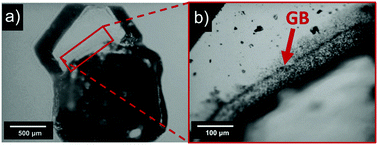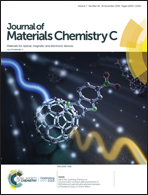Spatially resolved investigation of the defect states in methylammonium lead iodide perovskite bicrystals†
Abstract
Organic–inorganic halide perovskites are one of the most promising novel materials for photovoltaic applications. One of the most common and well-researched compounds in this material class is methylammonium lead iodide (MAPI). However, the formation of different kinds of defects in the polycrystalline MAPI thin films and their influence on the electrical performance of solar cells is still a matter of debate. In this work, we use single MAPI crystals grown by inverse temperature crystallization as a model system for the systematic experimental evaluation of defects as suggested by current theoretical work on MAPI thin films. The macroscopic nature of these crystallites enables an experimental approach that allows the separate evaluation of the grain boundary and crystallite bulk. For this purpose, we have employed a combination of μ-PL and μ-XPS measurements to probe the defect types suggested by the literature to determine the most likely defect types in the MAPI crystallites/thin film areas.

- This article is part of the themed collection: Electronic Properties and Characterisation of Perovskites


 Please wait while we load your content...
Please wait while we load your content...